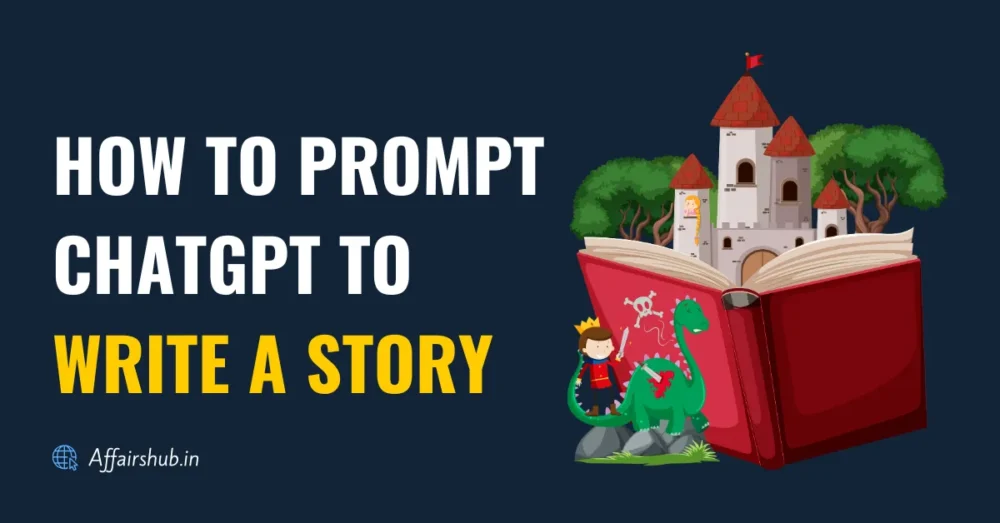Welcome to the ultimate guide on using ChatGPT prompts to enhance your English learning experience. Whether you’re a beginner or an advanced learner, ChatGPT can be a valuable tool to practice and improve your English skills
Hello, students and language enthusiasts! Are you ever puzzled by the colorful expressions sprinkled throughout English conversations? Fear not! Let’s discover a new way of learning the mysteries of idioms and phrases together with the help of ChatGPT Prompt.
Have you heard the saying “the early bird catches the worm”? Well, consider this your wake-up call to dive headfirst into the realm of idioms. With ChatGPT as your trusty guide, understanding these linguistic gems will be a breeze.
No more feeling like a fish out of water when you encounter unfamiliar idioms. Our prompts are designed to boost your comprehension and confidence in English communication. So, let’s kickstart this journey and unveil the secrets of English idioms together! Get ready to impress your peers and teachers with your newfound linguistic prowess. Join us in this exciting exploration, and let’s make learning English idioms a piece of cake!
✅ Also Read: How to Use ChatGPT: A Definitive Guide for Students
How Effective is ChatGPT for Learning English Idioms?
ChatGPT can be quite effective for learning English idioms! Since it’s trained on a vast corpus of text that includes a wide range of idiomatic expressions, it can provide explanations, examples, and even context for using idioms in different situations. Additionally, you can ask for clarification or further examples if needed, helping to deepen your understanding. However, it’s always a good idea to supplement your learning with real-life exposure to English, such as reading books, watching movies or TV shows, and engaging in conversations with native speakers.
What are English idioms and phrases?
To navigate this terrain effectively, we must first grasp the essence of idioms and phrases. Idioms are figurative expressions whose meanings cannot be deduced from their individual words. Phrases, on the other hand, encompass a broader category of expressions that convey specific meanings within a sentence. For instance, “raining cats and dogs” and “piece of cake” are quintessential examples of idioms and phrases, respectively.
Why learn English idioms and phrases?
Now, you might wonder, why invest time and effort in learning these linguistic quirks? Well, for one, mastering idioms and phrases enhances our communication skills by enabling us to express ourselves more vividly and succinctly. Additionally, it aids in deciphering the speech of native speakers and imbues our language with depth and color, elevating it beyond mere conveyance of information.
✅ Also Read: How to Prompt ChatGPT to Summarize a Book?
How ChatGPT can help in learning English idioms and phrases
ChatGPT Prompt for Grouping Similar Idioms
Grouping Idioms Related to Fruits
- “Generate a categorized list of idioms featuring fruits, organizing them based on the specific fruit referenced.”
- “Create a collection of idiomatic expressions related to fruits and group them according to the fruit they represent.”
- “Produce a list of idioms with fruit references, categorizing them by the metaphorical or symbolic meanings associated with each fruit.”
- “Organize idiomatic phrases that involve fruits into distinct categories according to the actions, characteristics, or qualities associated with the fruit mentioned.”
- “Compile idioms related to fruits and group them based on the cultural or contextual significance of the fruit in each expression.”
Grouping Idioms Related to Colors
- “Create a categorized list of idioms featuring colors, organizing them by the color they reference.”
- “Generate idioms associated with various colors and group them according to their color themes.”
- “Produce a collection of idiomatic expressions related to colors, grouping them based on the color they represent.”
- “Organize idioms that involve colors into distinct categories according to the hue or shade they describe.”
- “Compile idiomatic phrases with color references and categorize them by the primary colors they denote.”
Grouping Idioms Related to Animals
- “Generate a categorized list of idioms featuring animals, organizing them based on the animal they reference.”
- “Create a collection of idiomatic expressions related to animals and group them according to the type of animal they represent.”
- “Produce a list of idioms with animal references, categorizing them by the characteristics or behavior of the animals involved.”
- “Organize idiomatic phrases that involve animals into distinct categories according to the role or significance of the animal in the expression.”
- “Compile idioms related to animals and group them based on the symbolic meanings or cultural associations of the animals mentioned.”
Grouping Idioms Related to Weather
- “Generate a categorized list of idioms featuring weather, organizing them based on the type of weather they reference.”
- “Create a collection of idiomatic expressions related to weather and group them according to the meteorological phenomenon they represent.”
- “Produce a list of idioms with weather references, categorizing them by the impact or effect of the weather condition described.”
- “Organize idiomatic phrases that involve weather into distinct categories according to the emotional or metaphorical connotations of the weather mentioned.”
- “Compile idioms related to weather and group them based on the season or climate condition they depict.”
Grouping Idioms Related to Body Parts
- “Generate a categorized list of idioms featuring body parts, organizing them based on the specific body part referenced.”
- “Create a collection of idiomatic expressions related to body parts and group them according to the physiological or anatomical features they describe.”
- “Produce a list of idioms with body part references, categorizing them by the metaphorical or symbolic meanings associated with each body part.”
- “Organize idiomatic phrases that involve body parts into distinct categories according to the actions or sensations associated with the body part mentioned.”
- “Compile idioms related to body parts and group them based on the cultural or contextual significance of the body part in each expression.”
These prompts should help organize and categorize idioms based on their common themes, making it easier to understand and remember them.
📝 Note: Please try all these prompts on your own. For better results, use 'Bing Copilot.' It generates similar idioms, including explanations and example sentences.
✅ Also Read: ChatGPT Prompts for Kindergarten Teachers: Enhancing Early Childhood Learning with AI
Explanation and Context
You can ask ChatGPT about specific idioms or phrases, and it can provide explanations and examples to help you understand their meanings and usage in context.
Certainly! Here are some example prompts you could use to ask ChatGPT about specific idioms or phrases, seeking explanations and context:
- “What does the phrase ‘break the ice’ mean? Can you give me an example sentence using it?”
- “I’ve heard the idiom ‘hit the nail on the head’ before, but I’m not sure what it means. Could you explain it and provide a usage example?”
- “Can you tell me about the expression ‘barking up the wrong tree’? How is it used in sentences?”
- “I came across the phrase ‘cost an arm and a leg’ in a book. What does it signify, and can you provide a contextual example?”
- “I’m unfamiliar with the idiom ‘burning the midnight oil.’ Can you shed some light on its meaning and offer an instance of its usage?”
- “Could you explain the phrase ‘turn a blind eye’ to me? It seems interesting, and I’d like to know how it’s used in conversations.”
- “What’s the meaning of ‘a piece of cake’? Can you give me an example of how it’s used in everyday language?”
These prompts can help you gain a better understanding of idioms and phrases by providing explanations and examples within various contexts. Feel free to tailor them to specific idioms or phrases you’re curious about!
Practice Conversations
Engage in conversations with ChatGPT where you deliberately use idioms and phrases. This will give you an opportunity to practice incorporating them into sentences and understand how they are used in natural language.
Example Prompt:
- “Hey ChatGPT, have you ever been in a situation where you felt like you were ‘caught between a rock and a hard place’?”
- “I’m planning a trip next month, but I’m worried about ‘missing the boat’ if I don’t book my tickets soon. What do you think?”
- “You know, sometimes life throws unexpected challenges at us, but we just have to ‘roll with the punches,’ don’t you agree?”
- “I’ve been working on a project at work, and I’m feeling like I’m ‘burning the midnight oil’ to get it done on time. Have you ever experienced that kind of pressure?”
- “I recently started learning a new language, and it’s been quite challenging. But as they say, ‘practice makes perfect,’ so I’m sticking with it!”
Quiz and Test
You can ask ChatGPT to quiz you on idioms and phrases. For example, you can ask it to give you a sentence with a missing idiom and try to fill in the blank correctly.
Example Prompt:
- “Please provide a sentence with a blank where an idiom should fit. I’ll try to guess the correct idiom.”
- “Can you give me a scenario and leave a blank where an idiom would fit? I’ll try to figure out the appropriate phrase.”
- “Quiz me: Give me a sentence with an idiom, and I’ll explain its meaning and usage.”
- “Test my knowledge: Present me with a passage containing multiple idioms, and I’ll try to identify and explain each one.”
- “Challenge me: Give me a sentence where the idiom is used incorrectly, and I’ll try to correct it and explain why.”
Contextual Learning
ChatGPT can generate sentences or short passages containing idioms and phrases for you to read and analyze. This can help you learn how these expressions are used in different contexts.
Example Prompt:
- “Can you create a scenario where someone ‘spills the beans’ accidentally?”
- “I’d like to see how the phrase ‘cost an arm and a leg’ can be used in a sentence related to buying a house.”
- “Could you write a short paragraph demonstrating the idiom ‘caught between a rock and a hard place’ in a workplace situation?”
- “I’m curious how the idiom ‘raining cats and dogs’ could be incorporated into a description of a stormy scene.”
- “Can you craft a sentence that illustrates the idiom ‘jump on the bandwagon’ in the context of trying a new trend?”
Feedback and Correction
ChatGPT can provide feedback on your usage of idioms and phrases, helping you identify any mistakes and learn from them.
Example Prompt:
- “Can you review this paragraph and let me know if I’ve used the idiom ‘a dime a dozen’ correctly?”
- “I’m writing a story and I want to include the phrase ‘barking up the wrong tree.’ Can you suggest a context where it fits?”
- “I’m practicing idioms for an exam. Could you verify if I’ve used ‘hit the nail on the head’ appropriately in this sentence?”
- “I’m trying to incorporate the phrase ‘cutting corners’ into my presentation. Does this example make sense?”
- “I’ve heard the idiom ‘burning the midnight oil’ used in different ways. Can you clarify its meaning and usage?”
Customized Learning
You can specify the level of difficulty or the specific types of idioms and phrases you want to learn, and ChatGPT can customize its responses accordingly.
Example Prompt:
Act as an expert Question Maker who makes quizzes and questions only related to English idioms. Now, Provide me 10 questions related to Idioms, 5 fill-in-the-blanks (Difficulty level: very easy), and 5 MCQs (Difficulty level: Hard).
Overall, ChatGPT can serve as a versatile tool to support your learning of English idioms and phrases by providing explanations, examples, practice opportunities, and feedback.
English Idioms Image Promt
If you’re a teacher and want to make learning idioms more fun, you can use pictures that match the sayings. Like, for ‘caught between a rock and a hard place,’ you could show someone stuck between two big rocks, showing a tough choice. Or for ‘burning the midnight oil,’ you could use a picture of someone studying late at night under a lamp. These pictures can help students understand idioms better and make learning more enjoyable!
Method
At first you have to craft a prompt to generate the image prompt. To do this just follow the following steps:
Step 1. Choose a Idioms (For example: As cool as Cucumber).
Step 2: Open ChatGPT and put the following prompt.
- Act as an expert Prompt engineer. Now, provide an AI image prompt that visually represents the English idiom “As cool as a cucumber”.
[Each time you use it, Just change the idioms.]
Step 3: “Now, copy the image description from ChatGPT and paste it into Microsoft Bing Copilot, in the following format, then hit enter.”
Create this image: A digital illustration depicts a cucumber lounging on a beach chair under a parasol, wearing sunglasses, with a relaxed expression on its face. The background shows a serene beach scene with blue skies and calm ocean waves.
or,
A digital illustration depicts a cucumber lounging on a beach chair under a parasol, wearing sunglasses, with a relaxed expression on its face. The background shows a serene beach scene with blue skies and calm ocean waves. Create this image.

Bing Copilot will generate four images with different variations related to the idioms.

Conclusion
In conclusion, learning English idioms and phrases is not just a linguistic pursuit; it’s a journey of exploration and discovery. With ChatGPT as our guide, we can unravel the intricacies of idiomatic expressions, enriching our language skills and broadening our cultural horizons. So, let’s embark on this odyssey with curiosity and determination, embracing the richness of the English language one idiom at a time.
Explore More:









